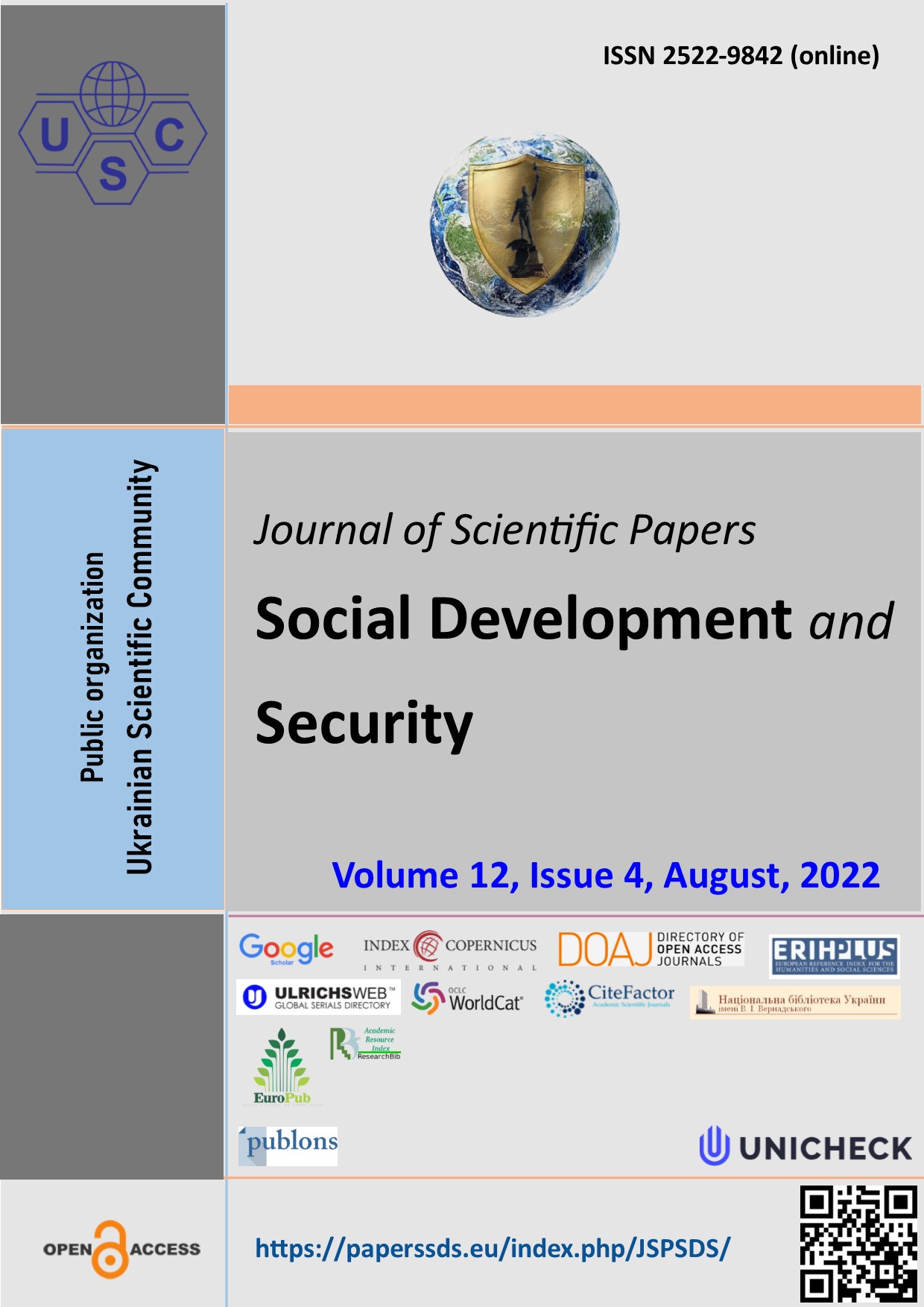The connection of individual-typological characteristics with adaptation to the service conditions of Air Force officers of the Armed Forces of Ukraine
Abstract
Purpose: based on the basis of the analysis of the experience of foreign scientists and the activities of the military units of the Armed Forces of Ukraine, to establish the connection of individual and typological features with adaptation to the conditions of service.
Design/Method/Approach: theoretical (analysis, synthesis, generalization, comparison), empirical (survey, observation, testing), methods of mathematical statistics (Kolmogorov-Smirnov criterion, Pearson and Student correlation coefficients), methods of diagnosis.
Findings: researched and established how the individual and typological features of servicemen are related to adaptation to the conditions of service.
Theoretical: the main result of research on the topic of the article is the determination of correlations of individual typological features with adaptation to service conditions.
Paper type: scientific-practical (research).
Downloads
References
Bitekhtyna L. D. (2005). Hotovnist do dii v ekstremalnykh sytuatsiiakh viiskovykh [Readiness to act in extreme military situations]. Pytannia psykholohii. №11 2005. S. 41 – 47 р.
Haniushkyn A. D. Doslidzhennia stanu psykhichnoi hotovnosti liudyny do diialnosti v ekstremalnykh umovakh [Study of the state of mental readiness of a person to work in extreme conditions]. Moscow: Prosvitnytstvo, 2002. 126 р.
Hurevych P. S. Psykholohiia nadzvychainykh sytuatsii [Psychology of emergency situations]: Navchalnyi posibnyk. Moscow: YuNIT-Dana, 2007. 494 р.
Ilin E. P. Psykholohiia indyvidualnykh vidminnostei [Psychology of individual differences]. M.VLADOS, 2004. 716 р.
Kriukova T. L. Psykholohiia povedinky [Psychology of behavior]. Kyiv, 2004. 148 р.
Kulykov L. V. Psykhohihiiena osobystosti : Pytannia psykholohichnoi stiikosti i psykhoprofilaktyky [Psychohygiene of personality: Issues of psychological stability and psychoprophylaxis]. St. Petersburg: Neva, 2004. 218 s.
Kulykov L. V. Teoriia stresu i psykhofiziolohichni doslidzhennia : Emotsiinyi stres [Theory of stress and psychophysiological research: Emotional stress]. Lviv: Nauka, 1989. 241 р.
Raihorodskyi D. Ya. (redaktor-ukladach). Praktychna psykhodiahnostyka. Metody i testy [Practical psychodiagnosis. Methods and tests]: Navch. Posibnyk. Samara: Vydavnychyi Dim «BAKhRAKh-M», 2001. 672 р.
Rykov S. L. Profesiine vykhovannia viiskovosluzhbovtsiv – zhinok: Teoriia i praktyka [Professional education of female military personnel: Theory and practice]. M. VU. 2002. 137 р.
Yarmolchyk, M., Semenenko, L., Dobrovolskyi, Y., & Poberezhec, T. (2021). Relationship between personal features and copy strategies in joint force participants. Journal of Scientific Papers «Social Development and Security», 11(4), 140-148. DOI : 10.33445/sds.2021.11.4.12
Abstract views: 378 PDF Downloads: 319
Copyright (c) 2022 Maria Yarmolchyk, Vodchyts Oleksandr, Liliia Semenenko, Maksym Hrechanyi, Yuzef Dobrovolskyi

This work is licensed under a Creative Commons Attribution 4.0 International License.
The authors agree with the following conditions:
1. Authors retain copyright and grant the journal right of first publication (Download agreement) with the work simultaneously licensed under a Creative Commons Attribution License that allows others to share the work with an acknowledgment of the work's authorship and initial publication in this journal.
2. Authors have the right to complete individual additional agreements for the non-exclusive spreading of the journal’s published version of the work (for example, to post work in the electronic repository of the institution or to publish it as part of a monograph), with the reference to the first publication of the work in this journal.
3. Journal’s politics allows and encourages the placement on the Internet (for example, in the repositories of institutions, personal websites, SSRN, ResearchGate, MPRA, SSOAR, etc.) manuscript of the work by the authors, before and during the process of viewing it by this journal, because it can lead to a productive research discussion and positively affect the efficiency and dynamics of citing the published work (see The Effect of Open Access).
















